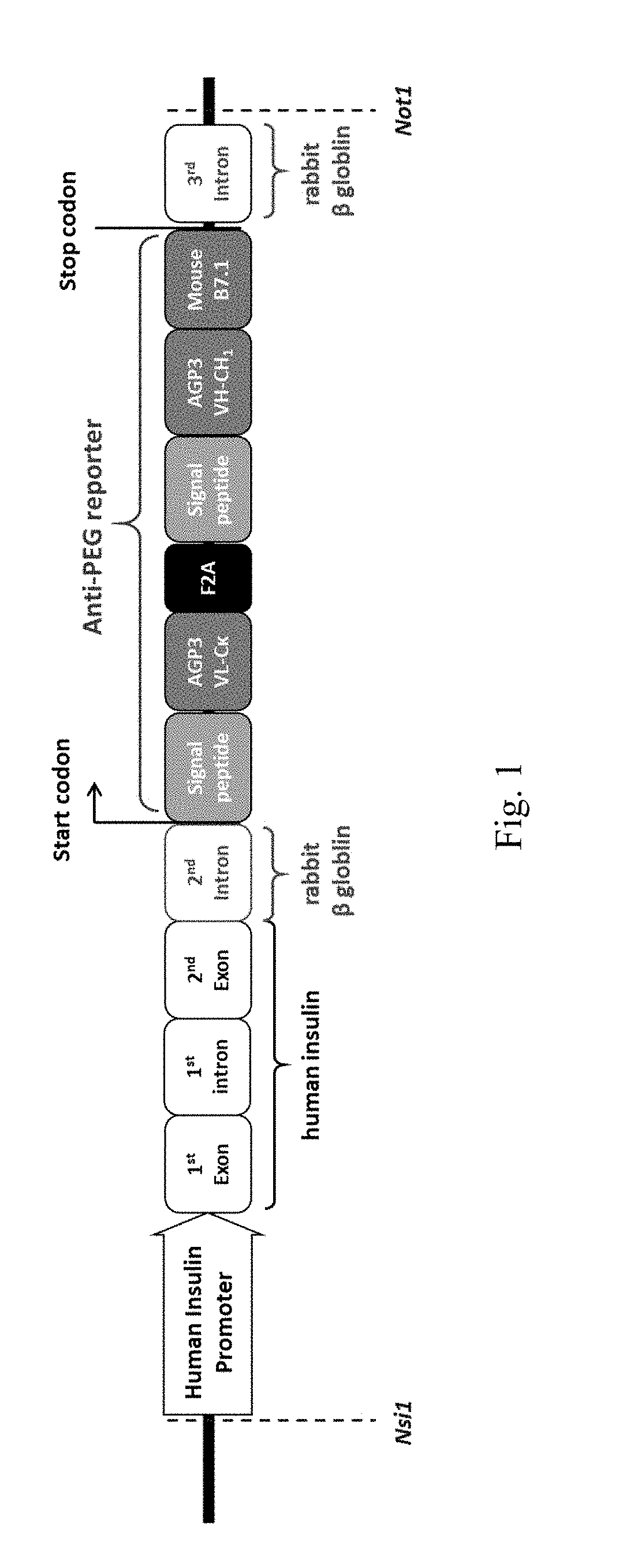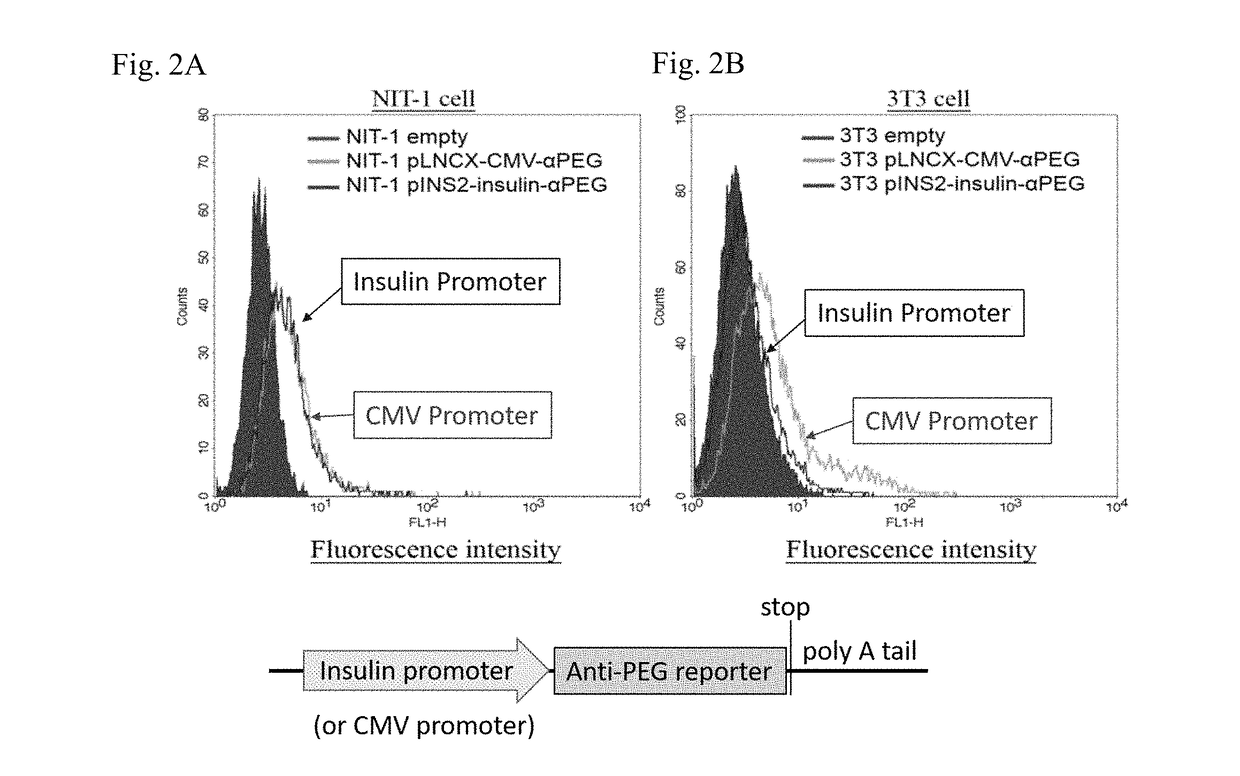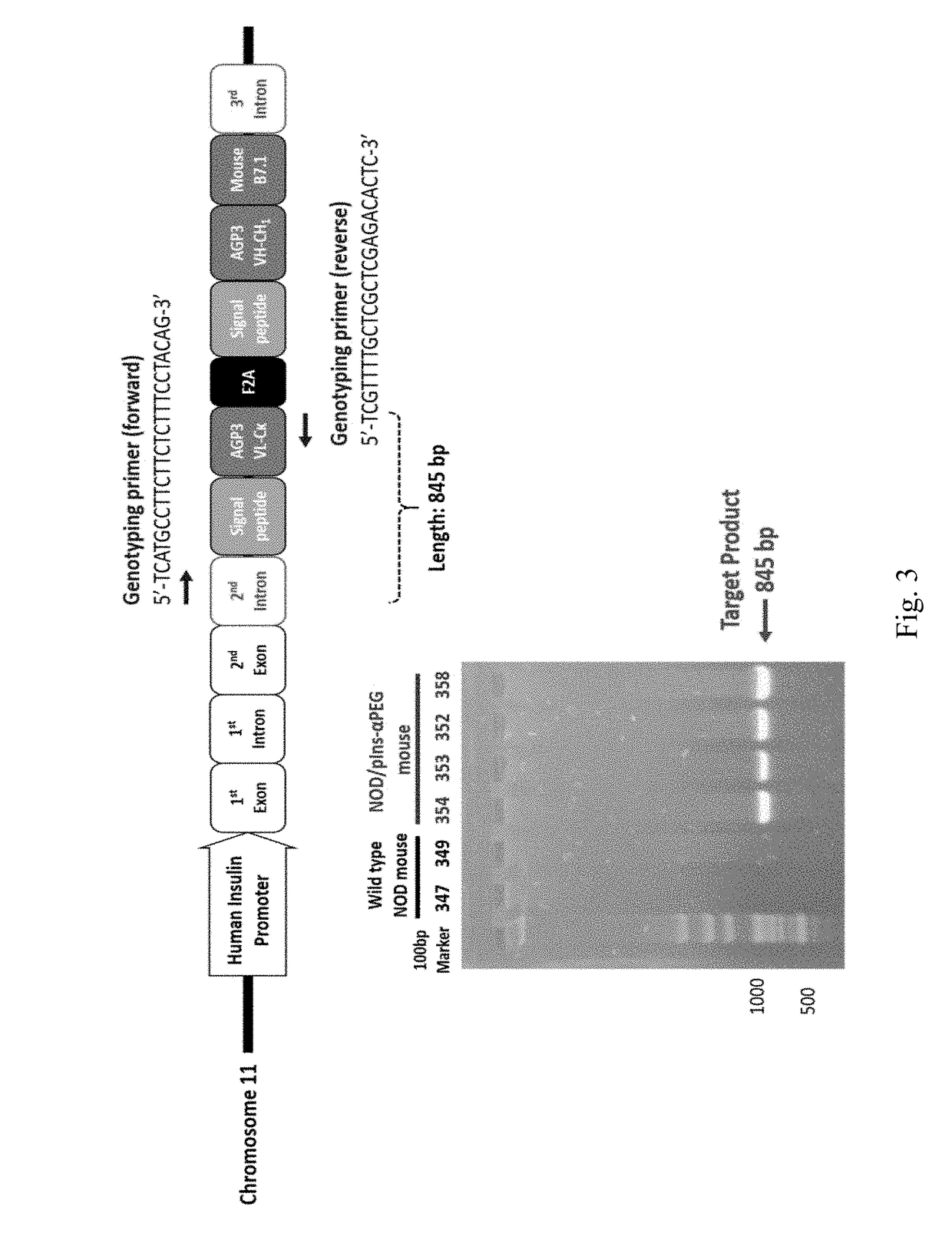Non-obese diabetes mice and its applications
a non-obese diabetic mouse and mouse technology, applied in the field of new non-obese diabetic mouse, can solve the problems of immune rejection, transgenic mouse only being used, and research cannot continuously observe the pathological process of one mouse, and achieve the effect of stably expressing, investigating the islet-protective effect, and convenient and accurate tracing
- Summary
- Abstract
- Description
- Claims
- Application Information
AI Technical Summary
Benefits of technology
Problems solved by technology
Method used
Image
Examples
example 1 preparation
of the Transgenic Gene Construct of the Invention
[0072]To construct pIns-anti-PEG reporter gene as shown in FIG. 1, the VL-Ck and VH-CH1 genes of anti-PEG reporter were joined by an internal ribosome entry site (IRES) and fused to the complementary DNA sequence encoding the C-like extracellular-transmembrane-cytosolic domains of the mouse B7.1 antigen (B7) to form anti-PEG reporter gene. The anti-PEG reporter gene was sliced and ligated into a vector with a human insulin promoter to construct a pIns-αPEG plasmid. FIG. 1 shows the schematic diagram of the whole transgenic gene construct of the invention.
example 2
Evaluation of Specific Expression of the Invention in Mouse Pancreatic Beta Cell
[0073]To evaluate whether the functional anti-PEG reporter could specifically express on mouse pancreatic islet beta cells, the pIns-αPEG plasmid was transfected into mouse pancreatic islet beta cells (NIT-1) or mouse fibroblast cells (3T3). A fluorescent probe modified by PEG (PEG-Qdot) was used to verify that under regulation of the human insulin promoter, functional anti-PEG reporter can be specifically expressed on mouse pancreatic islet beta cells (NIT-1) (FIG. 2A), while it cannot express on mouse fibroblast cells (3T3) (see FIG. 2B).
example 3
Preparation of NOD / pIns-αPEG Mouse of the Invention
[0074]To construct the NOD mice with pancreatic islet cells specifically expressing anti-PEG reporter (NOD / pIns-αPEG mice), the pIns-αPEG plasmid was digested with Nsi 1 and Not 1 enzymes to isolate pIns-αPEG gene fragment, and then, the pIns-αPEG gene fragment was transfected into the fertilized egg of the NOD mice using microinjection technique to produce NOD / pIns-αPEG mice (F0).
[0075]The genotyping check was used to confirm that the NOD mouse carries out the pIns-αPEG gene. Genomic DNA of NOD mice was isolated by an Easy Tissue and Cell Genomic DNA Purification Kit (GeneMark DP021E). The following locating primers, forward primer 5′-TCATGCCTTCTTCTCTTTCCTACAG-3 and reverse primer 5′-TCGTTTTGCTCGCTCGAGACACTC-3 were used to confirm the NOD mouse brings the pIns-αPEG gene by PCR technology using a 2×Taq PCR Mix Red reagent (Bioman, RT803R). The PCR Condition shows as followed: (1) Initial Denaturation: 94° C. for 3 minutes; (2) Gene ...
PUM
| Property | Measurement | Unit |
|---|---|---|
| time | aaaaa | aaaaa |
| optical imaging | aaaaa | aaaaa |
| fluorescence | aaaaa | aaaaa |
Abstract
Description
Claims
Application Information
 Login to View More
Login to View More - R&D
- Intellectual Property
- Life Sciences
- Materials
- Tech Scout
- Unparalleled Data Quality
- Higher Quality Content
- 60% Fewer Hallucinations
Browse by: Latest US Patents, China's latest patents, Technical Efficacy Thesaurus, Application Domain, Technology Topic, Popular Technical Reports.
© 2025 PatSnap. All rights reserved.Legal|Privacy policy|Modern Slavery Act Transparency Statement|Sitemap|About US| Contact US: help@patsnap.com



